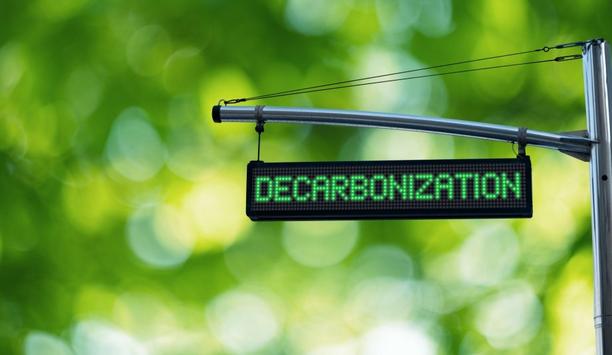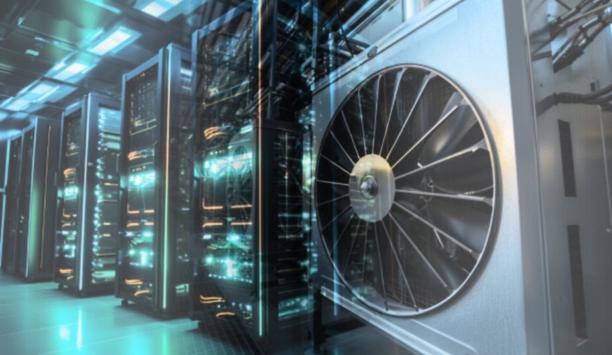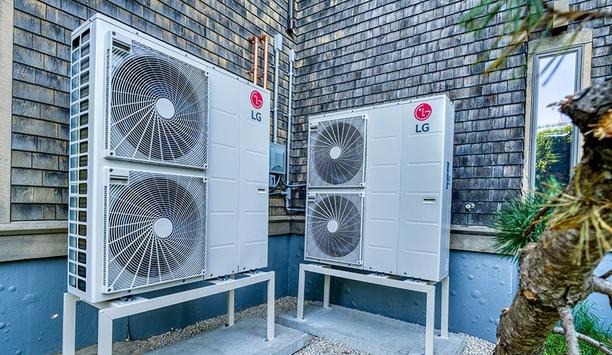Trane Technologies - Experts & Thought Leaders
Latest Trane Technologies news & announcements
Mitsubishi Electric Trane HVAC US LLC, a pioneering supplier of all-electric, all-climate Ductless and Ducted Mini-split and Variable Refrigerant Flow (VRF) heat pump and air-conditioning systems, recognized its top distributors as honorees during the 2025 Diamond Leadership Conference held at the St. Regis Hotel in Bermuda, from April 14-17, 2025. Honorees received either the 2024 Commercial Distributor of the Year Award or the 2024 Residential Distributor of the Year Award from METUS. Top-performing HVAC distributors The Diamond Leadership Awards are presented annually to top-performing HVAC distributors working with METUS across North America and Latin America. These awards recognize outstanding achievements in sales growth, innovation, customer service, and commitment to excellence. Conference attendees and their guests participated in engaging sessions and peer networking opportunities, along with a golf outing, local tours, fine dining, and an awards ceremony to celebrate winners’ accomplishments. Innovation across the HVAC industry Diamond Leadership Awards are presented annually to top-performing HVAC distributors working with METUS “The distributors we recognize at the Diamond Leadership Conference consistently exceed our expectations and set a high bar for excellence,” said Mark Kuntz, CEO of METUS, adding “Many are entrepreneurial business owners who lead with vision, invest in their teams, and drive innovation across the HVAC industry, truly embodying initiative and ingenuity.” The 2024 National Commercial Distributor of the Year Award was given to Homans Associates, and the 2024 National Residential Distributor of the Year Award was given to CFM Equipment Distributors Inc. Commercial and Residential Distributors of the Year Award METUS also presented a 2024 Commercial Distributor of the Year Award and a 2024 Residential Distributor of the Year Award to business unit channel pioneers. The following companies received awards: Distributor of the Year − Commercial Trane Technologies (Detroit Trane Commercial Sales Office), Livonia, Michigan, Central Business Unit Trane Technologies (New York City Trane Commercial Sales Office), Long Island City, New York, Mid-Atlantic Business Unit Homans Associates, Wilmington, Massachusetts, Northeast Business Unit – Also the National Commercial Distributor of the Year Brady Services, Greensboro, North Carolina, South Business Unit Hunton Trane, Houston, Texas, Southwest Business Unit Gensco, Inc., Fife, Washington, West Business Unit Efficiency Limited, Bermuda, International Business Unit Distributor of the Year − Residential Ferguson Enterprises, LLC, Plymouth, Minnesota, Central Business Unit Ferguson Enterprises, LLC, Halethorpe, Maryland, Mid-Atlantic Business Unit Meier Supply Company Inc., Conklin, New York, Northeast Business Unit Johnstone Supply-The Ware Group, Jacksonville, Florida, South Business Unit Charles D. Jones Company, Riverside, Missouri, Southwest Business Unit CFM Equipment Distributors, Inc., Sacramento, California, West Business Unit – Also the National Residential Distributor of the Year
Trane Technologies, a climate innovator, has been featured on the Financial Times’ list of Europe’s Climate Pioneers for the fifth consecutive year. Compiled in collaboration with market research company Statista, this list highlights European businesses that have achieved the greatest reductions in their emissions intensity between 2018 and 2023. Reduction of gas emissions "We are honored to be recognized by the Financial Times as one of Europe’s climate pioneers for the fifth consecutive year," said Jose La Loggia, Group President for Europe, Middle East, and Africa (EMEA). In 2024, the company opened its state-of-the-art Innovation Center in Oberhausen, Germany "At Trane Technologies, driving impactful change is integral to our strategy. We are currently implementing scalable technologies to significantly reduce emissions while also driving strong paybacks from lower energy costs for customers in the built environment and in the transport refrigeration industry." "We take great pride in pioneering our industry in the substantial reduction of global greenhouse gas emissions, particularly in the areas of heating, cooling, and the refrigerated preservation of food and medicine.” Trane® heating and cooling solutions Trane Technologies is a recognized pioneer in delivering sustainable solutions, driving the decarbonization of buildings, industry, and the cold chain through its unwavering commitment to sustainable innovation. In 2024, the company opened its state-of-the-art Innovation Center in Oberhausen, Germany. The facility showcases a diverse range of efficient and sustainable Trane® heating and cooling solutions for industrial and commercial buildings. Additionally, it serves as Trane Technologies’ Center of Excellence (CoE) for Electrification. UN Global Compact’s Forward Faster initiative The initiative underscores the need for urgent action from both the public and private sectors In December 2024, Trane Technologies became one of the first companies in Ireland to commit to the UN Global Compact’s Forward Faster initiative. This initiative offers businesses strategic guidance to significantly advance the United Nations' 2030 Sustainable Development Goals (SDGs). With only 17% of the SDGs currently on track, the initiative underscores the need for urgent action from both public and private sectors. Gigaton Challenge Trane Technologies is positioned to lead the movement to tackle climate change. With its Gigaton Challenge, the company is collaborating with customers to reduce greenhouse gas emissions by 1 billion metric tons by 2030. This reduction is equivalent to 2% of the world’s annual emissions, or the combined yearly emissions of Italy, France, and the U.K.
Trane Technologies, a climate innovator, has been recognized for its leadership in corporate transparency and performance on climate by CDP, earning a place on its annual ‘A List’ for the third consecutive year. Of the record 22,400 companies that received a climate score this year, Trane Technologies is distinguished as part of the 2% of scored companies to earn an ‘A’ rating. CDP’s rigorous scoring process CDP’s rigorous scoring process assesses the comprehensiveness of disclosure, awareness CDP’s rigorous scoring process assesses the comprehensiveness of disclosure, awareness and management of environmental risks, and the demonstration of best practices in environmental leadership, including setting ambitious and meaningful targets. “Achieving CDP’s prestigious ‘A List’ recognition underscores Trane Technologies’ climate leadership and our commitment to meaningful, transparent action for a more sustainable world,” said Mauro Atalla, Senior Vice President, Chief Technology and Sustainability Officer, Trane Technologies. latest in a series of Trane Technologies Mauro Atalla added: “Sustainability is at the center of our strategy and continued success. We are proud to lead by example, proving that climate accountability, customer innovation, an uplifting culture and a strong bottom line go hand in hand.” Inclusion on CDP’s ‘A List’ is the latest in a series of accolades recognizing Trane Technologies for its industry-pioneering transparency, credibility and accountability. Forefront of decarbonizing buildings Trane Technologies is at the forefront of decarbonizing buildings, industry and the cold chain via actions The company has also been ranked in the Top Ten of the 2025 JUST 100, named one of Fortune’s World’s Most Admired Companies for the 13th consecutive year and listed on the Corporate Knights’ 2025 Global 100 as well as the Dow Jones Sustainability World and North American Indices. Trane Technologies is at the forefront of decarbonizing buildings, industry and the cold chain through pioneering actions and innovations. 2030 Sustainability Commitments The company is making significant progress toward its 2030 Sustainability Commitments, including the Gigaton Challenge, and its pledge to be net-zero by 2050. It’s also the first company in its industry to have its near and long-term emissions reduction targets externally validated by the Science Based Targets Initiative (SBTi).
Insights & Opinions from thought leaders at Trane Technologies
Recently, nine states pledged to accelerate the transition to clean buildings in their states, including a goal of deploying heat pumps to make up 65% of residential heating, cooling, and water heating by 2030. California, Colorado, Maine, Maryland, Massachusetts, New Jersey, New York, Oregon, and Rhode Island signed a memorandum of understanding in February outlining their collective efforts to accelerate the deployment of clean technologies such as heat pumps in new and existing homes. Benefits of heat pumps Fifteen percent of the world’s greenhouse gas emissions come from the heating and cooling of buildings and homes, and accelerating the use of heat pumps advances the goal of a cleaner, healthier environment. “The door is closing on reasons to shy away from heat pumps because the technology is here, and the incentives and support from government programs are on the rise,” says Katie Davis, VP of Engineering and Technology at Trane Residential. “There is no better time than now to make the change for a more sustainable future.” portfolio of residential heat pumps The new portfolio yields an emissions reduction of over 35% (compared to 2019), and the new 15 SEER heat pump Beginning this month, Trane Residential launches its new portfolio of residential heat pumps that achieve new levels of emissions reduction. The new portfolio yields an emissions reduction of over 35% (compared to 2019), and the new 15 SEER heat pump will meet Energy Star requirements. “We saw the change in refrigerant regulation as an opportunity to propel us forward in technology toward a better environment,” says Davis. Heat pump technology Heat pump technology has been around since the mid-1800s, and it has evolved significantly since that time. Within the last 10 years, improvements have been made in efficiency, in both the heating and cooling cycles. The use of vapor injection technology in the heating cycle has greatly improved the capacity and efficiency of heating with heat pumps. Comfort mode Comfort mode provides a level of comfort similar to that of fossil fuel-burning furnaces Trane heat pumps also can deliver very warm air at the register through Comfort mode, which provides a level of comfort similar to that of fossil fuel-burning furnaces, says Davis. Homeowners who prefer furnaces due to the temperature of the discharge air have similar capabilities with Trane heat pumps. Sustainability and efficiency Trane Technologies seeks to challenge what’s possible for a sustainable world, says Davis. “Sustainability is the foundation of how we design our products for the future of HVAC,” she says. Improvements in the efficiency of Trane Heat Pumps have a direct correlation to reduced emissions, which translates to energy savings on a homeowner’s utility bill. Trane Link systems Other factors that assist in driving the transition to the electrification of heating are utility rebates The Trane Link systems provide up to an additional 5% energy savings to the homeowner using smart technology that efficiently manages the home load environment. Other factors that assist in driving the transition to the electrification of heating are utility rebates and a program that assists homeowners in making the shift. Of course, "indirect emissions" and the greening of the grid have an impact on emissions as the industry moves toward the use of heat pumps and away from fossil fuel-burning systems. emissions reduction by design Trane is achieving industry-pioneering emissions reduction by design, and as the grid becomes greener, it will accelerate the impact the Trane portfolio will have on the industry and the environment, says Davis. “At Trane, we utilize a multi-variable approach to reducing emissions in our product portfolio,” says Davis. “While a greener grid can help to accelerate the reduction in emissions, our systems utilize smart technology, lower global warming potential refrigerants, and improved efficiency in heating design to achieve industry-pioneering emissions reduction for our systems.” alternative energy sources When designing for sustainability, several levers can be pulled to yield the best results Heat pumps play a role in encouraging more efficient energy sources. HVAC accounts for over 40% of the energy usage in a home. There is an opportunity for the development of capabilities in alternative energy sources for heating and cooling as well as improved energy management for the home. When designing for sustainability, several levers can be pulled to yield the best results. One of those levers is related to digital controls and smart systems. Trane Link Variable Speed Trane Link Variable Speed Systems provide over 700 speeds to provide a pinpoint match to a homeowner’s load demand in a home. The system provides temperature control within 0.5 degrees F, humidity control to the exact setpoint defined by the homeowner, and provides up to 5% energy savings on utility bills. By utilizing the digital technology within the control system, the heat pump manages comfort as well as efficiency to provide the best for the homeowner and the environment. For dealers, Trane provides Dealer Diagnostics that give precise information on runtime and system performance, in real time, to ensure the most optimal operating parameters for the best system performance and efficiency. heat pump heating capability Two obstacles are cost and the customer perception of heat pump heating capability Two obstacles remain in the transition journey. They are cost and the customer perception of heat pump heating capability. “As we accelerate this transition, the time is now for utilities and government programs to step up and assist homeowners in electrification of heating,” says Davis. Inflation Reduction Act (IRA) funding is a step toward this assistance, but more is needed across the industry to ensure a rapid transition to cleaner equipment. Consumer concerns In addition to cost, homeowners have not been properly educated on the advancement of heat pump technology over the last decade, and heating with heat pumps has improved significantly. “The cost to convert from furnaces to heat pumps can be prohibitive, but with government incentives, like the IRA rebates, this becomes less of an issue,” says Davis. “Other concerns from consumers are energy bills and the concern that energy costs will rise with the use of heat pumps. While it is true that electric energy bills may rise, homeowners should see a reduced cost of use of other energy sources,” says Davis. “In the end, we move closer to parity.”
The U.S. Department of Energy (DoE) has challenged manufacturers to accelerate the development of heat pumps that can perform well in colder climates. As part of its Initiative for Better Energy, Emissions, and Equity (E3 Initiative), the DoE’s Residential Cold Climate Heat Pump (CCHP) Technology Challenge seeks to demonstrate performance in the lab and at pilot sites before implementing new technologies in the market. Nominal capacity requirement To meet the DoE CCHP Challenge, a heat pump 4 tons and lower must have a coefficient of performance (COP) of 2.4 while providing 100% of nominal rated capacity at an ambient temperature of 5 degrees F. A heat pump larger than 4 tons must have a COP of 2.1 with the same nominal capacity requirement at 5 degrees F. There are no products on the market that currently meet these performance specifications In addition, the heat pump must have an HSPF2 = 8.5 in Climate Zone 5 (a cold northern climate where annual minimum temperatures range between negative 20 and negative 10 degrees Fahrenheit). There are no products on the market that currently meet these performance specifications. COP is the relationship between the power (kW) that is drawn out of the heat pump as cooling or heat, and the power (kW) that is supplied to the compressor. HSPF2 is a factor evaluating the efficiency of a heat pump during cold weather, measured according to the DoE’s new, more accurate scale. Cascade refrigeration systems There are several approaches to improving a heat pump’s performance in cold climates, including cascade refrigeration systems, various forms of multi-stage compression, vapor-injection, and liquid injection. The optimal solution will consider the trade-offs among customer needs, product cost, operational efficiency, reliability, and technology readiness. “It’s all about maximizing value for our customers while meeting their comfort needs,” says Katie Davis, Vice President of Engineering and Technology, Residential HVAC, Trane Technologies. Trane tested its CCHP prototype at the DOE’s lab, the Oak Ridge National Lab Facility. The prototype performed in temperatures as low as negative 23 degrees Fahrenheit, surpassing the mandatory negative 20 degrees Fahrenheit DoE requirement. “Our prototype pushed the limits of the testing with high performance even as temperatures moved beyond the trial scope,” says Davis. Trane tested its CCHP prototype at the DOE’s lab, the Oak Ridge National Lab Facility Ambient operating conditions “Passing the lab testing phase means we’re now able to conduct field testing with this heat pump, which will provide us with the opportunity to keep a family warm this winter,” says Davis. Trane’s unit will begin field testing in Boise, Idaho. The prototype will be placed in cold climate ambient operating conditions in a residential building. For Trane’s current CCHP prototype, the DoE may decide to extend the field trial testing into a second heating season. If this is the case, Trane will participate in the second field trial in 2023. If field trial testing concludes in 2022, Trane will continue toward the commercialization of the product Vapor compression cycle Colder ambient temperatures require changes to the vapor compression cycle Colder ambient temperatures require changes to the vapor compression cycle utilized in a heat pump to provide the heating capacity required at 5 degrees F and below. Compression technology has now advanced to the point where this capability can be incorporated into the system to provide the additional capacity required. Currently for residents in colder areas of the country, and until newer technology comes to market, a heat pump might be the right choice when matched with a furnace or other electric heating device. This way, a home will continue to stay warm on the coldest days or run more efficiently for most of the season. Environmentally minded furnaces Compared to a traditional furnace and air conditioner heating and cooling setup, heat pumps can save as much as $526* a year in energy costs. They also emit zero of the harmful emissions that have been proven to contribute to climate change. (*Estimated cost savings are based on ENERGY STAR's Savings Calculator for a 3-ton 21 SEER/10 HSPF heat pump and programmable thermostat versus the industry standard 14 SEER/8.2 HSPF 3-ton heat pump and standard thermostat in St. Louis, Mo.) Trane continues to provide the most efficient options available including heat pumps Trane continues to provide the most efficient options available including heat pumps, more environmentally minded furnaces, and the pairing of the two in dual-fuel systems. Like a hybrid car that runs on electricity when possible and switches to gas as needed, a dual-fuel system runs the electric heat pump as often as possible and switches to the gas furnace when needed. Other electrification incentives Hybrid systems offer those homeowners a way to adopt a heat pump and reduce their carbon footprint at a much lower total cost while keeping the safety net of a gas furnace, especially for those in colder regions of the country. The most efficient heat pumps, like the Trane Platinum XV20i Heat Pump, can operate in temperatures as low as 0 degrees Fahrenheit. The recently passed U.S. Inflation Reduction Act (IRA) and other electrification incentives that exist in some markets will make heat pumps very attractive, even for homes that currently have a gas furnace. Hybrid systems offer those homeowners a way to adopt a heat pump Variable speed HVAC systems Homeowners seeking out sustainable solutions like heat pumps are becoming increasingly aware of governmental perks and tax rebates to reduce fossil fuels. They can take advantage of new clean energy tax credits and rebates available through the IRA, which includes an expansion of the Energy Efficiency Home Improvement Tax Credit (25C) and an extension and expansion to the New Energy Efficient Home Tax Credit (45L). The Trane Platinum XV20i Heat Pump is part of a new line of equipment featuring Trane Link, a communication technology designed to simplify installation, commissioning, and remote monitoring of Trane’s variable speed HVAC systems. Following a successful regional launch in spring 2022, the full line of Trane Link equipment will be available for Trane’s independent dealers to order nationwide beginning this month.
From A To L: Your A2L Transition Guide
DownloadLeveraging Radiant And Hydronics To Help Achieve Decarbonization Goals
DownloadSealed Connectors In Harsh Environments
DownloadPowering And Cooling Next Generation Data Centers
DownloadDebunking Myths To Promote A Bright Future For Heat Pumps
Download



















































